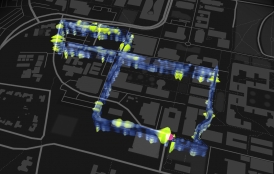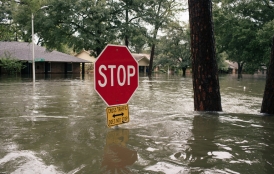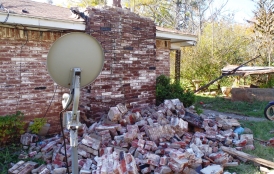The Stanford School of Earth, Energy & Environmental Sciences is now part of the Stanford Doerr School of Sustainability.
This page is currently being maintained for archival purposes only. For the latest information, please visit us here.
Predicting Risk to Communities from Earthquakes and Tsunamis
The combined expertise of Stanford Earth geophysicists has recently moved the scientific community closer than ever to understanding and predicting the behavior of tsunamis and earthquakes.
Stanford School of Earth, Energy & Environmental Sciences
June 8, 2015
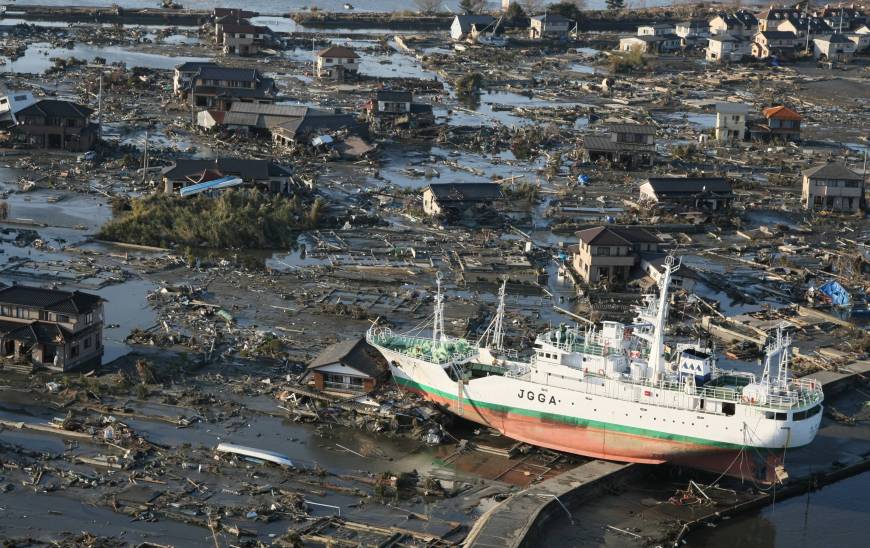
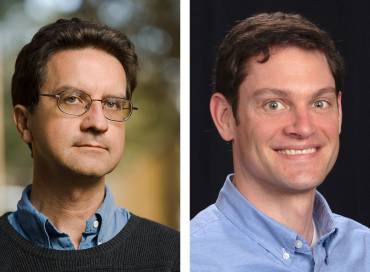
Professors Greg Beroza (left) and Eric Dunham
In 2008, Professor Greg Beroza and postdoctoral researcher Shuo Ma theorized that the power of certain earthquakes that originate beneath the seafloor might become amplified as they traveled from deep in Earth’s interior toward the surface. And, the greater the amplification, they reasoned, the greater the size of the resulting tsunamis.
Three years later, their expectations were borne out in a devastating way when a magnitude 9.0 undersea earthquake off the coast of Japan triggered massive tsunami waves nearly 100 feet tall, leading to explosions and meltdowns at the Fukushima Daiichi Nuclear Power Plant. The event caught scientists by surprise, because it occurred on a part of the earthquake fault that many people thought couldn’t slip, says Beroza, who is the Wayne Loel Professor.
It especially piqued the curiosity of Professor Eric Dunham, Beroza's colleague in the geophysics department, and postdoctoral researcher Jeremy Kozdon. Dunham and Kozdon used computer models and newly available details about the geometry and geologic properties of the Japan Trench to refine and extend Beroza’s initial predictions. "On all counts, their model is a better representation of what really happened," Beroza says.
And, in a discovery that could benefit coastal communities worldwide, Dunham’s team found that long-period sound waves generated by undersea quakes could provide important new information for tsunami warning systems.
"Sound waves propagate through water 10 times faster than the tsunami waves, so we can know what’s happening a hundred miles offshore within minutes of an earthquake occurring,” explains Dunham. “This model could help us learn to predict whether a tsunami is coming, how large it will be, and when it will arrive."
How Much Will Vulnerable Cities Shake in a Quake?
Courtesy of Greg Beroza and Eric Dunham
The new technique allowed the Stanford team to more accurately model the expected behavior of a major earthquake in the Los Angeles Basin.
Beroza and Dunham recently teamed up again to lead research using "virtual earthquakes" to forecast the shaking risk of quake-prone cities such as Los Angeles and Tokyo.
The pair worked with graduate student Marine Denolle to develop a technique that uses weak vibrations generated by Earth’s oceans as a proxy for seismic waves generated by real earthquakes. By studying the behavior of these so-called ambient seismic waves, they found evidence that bolstered existing risk models, which were based on a 2006 supercomputer simulation called "ShakeOut."
That model had predicted that when California's southern San Andreas Fault ruptures in a future earthquake, northbound seismic waves will be funneled toward Los Angeles along a 60-mile-long natural conduit that connects the city with the San Bernardino Valley.
The Stanford team’s research, published in 2013 in the prestigious journal Science, is already influencing policy and planning in the region. Lucy Jones, science advisor for risk reduction at the U.S. Geological Survey in Pasadena, California, said some experts had doubted ShakeOut's predictions for quake amplification in the Los Angeles Basin.
"ShakeOut is the basis of the seismic resilience plan for Los Angeles and central to our argument for the necessity of retrofitting,” says Jones. “And the Stanford model greatly increased its credibility."


